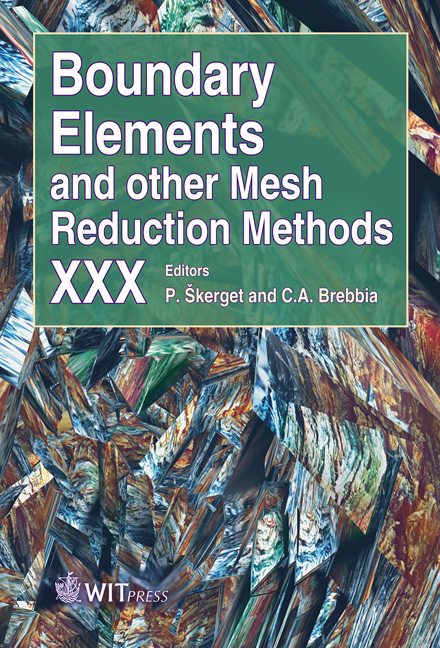Desingularised Method Of Double Layer Fundamental Solutions For Potential Flow Problems
Price
Free (open access)
Transaction
Volume
47
Pages
10
Page Range
159 - 168
Published
2008
Size
467 kb
Paper DOI
10.2495/BE080161
Copyright
WIT Press
Author(s)
B. Šarler
Abstract
This paper describes an application of the recently proposed Modified Method of Fundamental Solutions (MMFS) to potential flow problems. The solution in two dimensional Cartesian coordinates is represented in terms of the double layer fundamental solution of the Laplace equation. The collocation is used for determination of the expansion coefficients. This novel method does not require a fictitious boundary unlike the conventional Method of Fundamental Solutions (MFS). The source and collocation points thus coincide on the physical boundary of the system. The desingularised value of the fundamental solution is in case of the coincidence of the collocation and source points determined from the respective integral equations logic. The values of the derivatives of the double layer fundamental solution in the coordinate directions, as required in potential flow calculations, are calculated indirectly from the considerations of the constant potential field. A numerical example of potential flow around the two dimensional circular region is shown. The results with the MMFS are compared with the results of the classical single layer MFS with an artificial boundary, and the analytical solution. It is shown that the MMFS gives better accuracy of the velocity components as compared with the classical MFS. Keywords: potential flow, method of fundamental solutions, desingularisation, double layer potential. 1 Introduction In recent years there has been strong development in mesh reduction methods in which the polygon-like meshes are reduced or avoided. The MFS is a
Keywords
potential flow, method of fundamental solutions, desingularisation, double layer potential.





